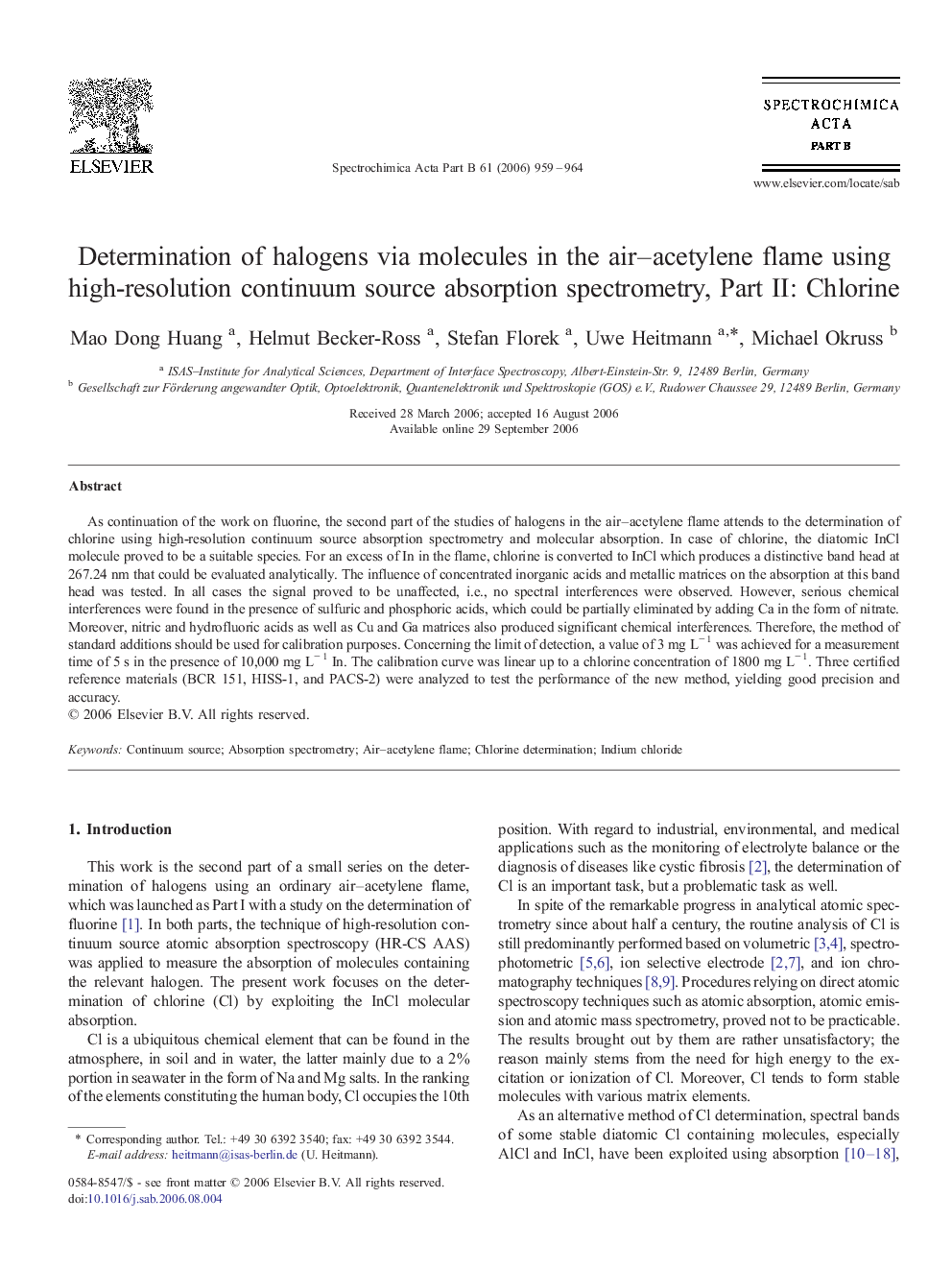| Article ID | Journal | Published Year | Pages | File Type |
|---|---|---|---|---|
| 1240928 | Spectrochimica Acta Part B: Atomic Spectroscopy | 2006 | 6 Pages |
As continuation of the work on fluorine, the second part of the studies of halogens in the air–acetylene flame attends to the determination of chlorine using high-resolution continuum source absorption spectrometry and molecular absorption. In case of chlorine, the diatomic InCl molecule proved to be a suitable species. For an excess of In in the flame, chlorine is converted to InCl which produces a distinctive band head at 267.24 nm that could be evaluated analytically. The influence of concentrated inorganic acids and metallic matrices on the absorption at this band head was tested. In all cases the signal proved to be unaffected, i.e., no spectral interferences were observed. However, serious chemical interferences were found in the presence of sulfuric and phosphoric acids, which could be partially eliminated by adding Ca in the form of nitrate. Moreover, nitric and hydrofluoric acids as well as Cu and Ga matrices also produced significant chemical interferences. Therefore, the method of standard additions should be used for calibration purposes. Concerning the limit of detection, a value of 3 mg L− 1 was achieved for a measurement time of 5 s in the presence of 10,000 mg L− 1 In. The calibration curve was linear up to a chlorine concentration of 1800 mg L− 1. Three certified reference materials (BCR 151, HISS-1, and PACS-2) were analyzed to test the performance of the new method, yielding good precision and accuracy.
